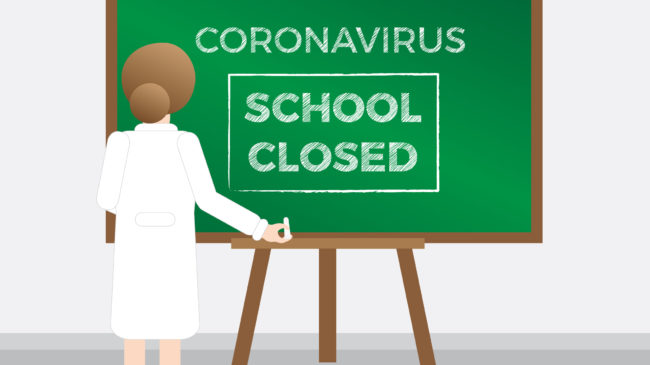As educators scramble to serve millions of children while schools are shut down there’s another crisis looming: the economic fallout of the coronavirus pandemic is going to blow substantial holes in education budgets.
It’s difficult to think about dollars and cents during a public health emergency, but policymakers need to start preparing now for a new fiscal reality. This means pursuing school finance reforms that optimize how education dollars are spent while minimizing the impact of funding cuts on disadvantaged students.
Both state and district officials have critical roles to play, and there are four key strategies to help them accomplish this:
- Use a scalpel, not a cudgel
It’s critical to ensure that existing funding inequities aren’t exacerbated by budget cuts. Virtually every school finance formula has funding streams that allocate dollars inefficiently and this is where policymakers should focus. Importantly, many states employ hold harmless provisions that have no connection to students’ needs and guarantee funding based on historical revenue levels. For example, school districts in Missouri receive no fewer state dollars than what they were given in the 2005-06 school year. As a result, scarce resources are siphoned off to property wealthy districts such as Brentwood, which generates more than $21,000 per pupil in operating revenue annually.
Similarly, policymakers should also target minimum aid allotments and other outside-the-formula provisions that fail to account for districts’ ability to raise local revenue. In fact, it would be wise to rethink the role of local revenue altogether by untethering the relationship between funding and property wealth. After all, school districts that are more reliant on state funding—and often have the greatest share of disadvantaged students—will be the most impacted by budget cuts.
The reality is that not every dollar in state funding formulas is equal and a surgical approach to reductions can help limit the effect on those who are already disadvantaged.
2. Eliminate burdensome spending requirements
Now, more than ever, states must eliminate top-down spending mandates so that every education dollar can be maximized. These typically come in the form of categorical grants, programmatic funding, and staffing allotments that limit district flexibility. In a recent Education Week Research Center survey of principals and administrators more than half of the respondents indicated that state legislators are the biggest obstacle to making spending decisions that best address students’ needs. For example, North Carolina’s formula has 37 separate funding streams that are tied to specific purposes such as summer reading camps and driver training. This problem is especially acute in a budget crunch when local officials are in the best position to make tradeoffs over how scarce resources are used.
One reform that policymakers can learn from is California’s Local Control Funding Formula, which streamlined more than 30 separate programs into a weighted-student formula that gives districts more say over how education dollars are spent. Research indicates that the results of this reform are promising: 82 percent of superintendents agree that this approach is leading to greater alignment among goals, strategies, and resource allocation decisions and there’s also evidence of cultural shifts and customization within districts.
3. Empower principals
Districts can also use school finance reform to help weather tough fiscal times. More than 20 school districts across the U.S., in cities such as Indianapolis, Denver, and Atlanta, have adopted student-based budgeting models that allocate dollars more equitably and help put principals in the driver’s seat. This ensures that funding is tied directly to student need and that school leaders, who are better positioned to engage their communities, are empowered to make key decisions. A study by the American Institute for Research and the U.S. Department of Education paints a bleak picture of the status quo finding that schools typically have discretion over only 8 percent of operating dollars, which research suggests can create inefficiencies. As one principal puts it, “I know what’s best for my school because I’m in the school.” During economic downturns, it’s especially important to tap into this local knowledge and expertise.
4. Leverage school spending data
The good news is that school districts will have more robust financial data to work with since all states are now required to report school-level spending thanks to a provision in the federal Every Student Succeeds Act. District officials should leverage these data, which are already available in many states, by examining their current spending patterns across schools and identifying any funding inequities. Ultimately, this will help education leaders make more informed decisions and avoid deepening funding chasms that already exist.
While there’s a lot of uncertainty in the days, weeks, and months ahead, the pandemic’s major impact on schools and government budgets all but guarantees that states and school districts will feel the fiscal effects of the coronavirus sooner rather than later. Policymakers should immediately start pursuing strategies that protect the kids who are most vulnerable to it while ensuring that every education dollar counts.

